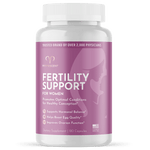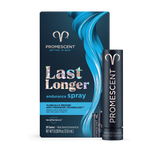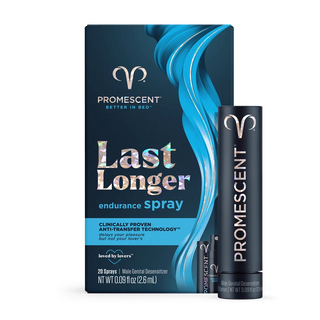Can you get pregnant the day after ovulation? Our guide will go over when a woman's fertile window is so couples can give themselves the best chance of conceiving.

reviews


reviews

Getting pregnant involves understanding what occurs during ovulation and knowing how to predict the ovulation cycle.
Ovulation happens when a mature egg is released from one of your ovaries, and the body is prepared to receive sperm for fertilization.
It's possible to get pregnant within 24 hours of ovulation. After this time, the egg will disintegrate into the uterine lining.
Ovulation can last anywhere between 12 to 24 hours.
A few ways you can increase your chances of conceiving include changing what you eat, de-stressing, and having sex around the time of ovulation.
On average, ovulation occurs near the 14th day of your 28-day cycle. But for most women with a 28-day cycle, ovulation can happen on any day between the 11th and 21st day. This period of time is referred to as your fertile window.
Let's look more closely at the fertile window so you'll know when you're most fertile and how to predict ovulation better.
The egg must be fertilized within 12 to 24 hours after ovulation for pregnancy to occur. If fertilization does not occur, the egg disintegrates into the uterine lining.
Having sex before ovulation allows the sperm to be ready and waiting for the egg's release. Sperm remains viable for up to five days.
According to older research, the most optimal days to conceive are the day before and the day of ovulation. The chances of getting pregnant drop one-day post ovulation.
Waiting too late in your ovulation cycle to try can hurt your chances of getting pregnant.
The fertile window is around six days for the average woman. Ovulation itself only lasts 12 to 24 hours. This short period of time makes it critical for couples to have sex prior to ovulation.
While the time can vary, ovulation happens halfway through a typical 28-day cycle. But there are methods of tracking ovulation so that you don't just have to guess which day you're most fertile.
No method of tracking ovulation is perfect, and other factors, such as age and menstrual cycle regularity, can affect predicting ovulation.
Monitoring changes in vaginal discharge is one of the oldest ways to track ovulation, and it doesn't cost a thing.
When estrogen rises, your body creates a sperm-friendly cervical mucus that is clear and stretchy, sort of like egg whites.
The vaginal discharge will start to become cloudy, thicker, or disappear completely after ovulation.
It's important to note that dehydration can impact the body's production of cervical mucus.
Your basal body temperature (BBT) is the temperature that your body is at when at rest.
Checking and charting your BBT for a few months will help you better predict ovulation. You will use a digital oral thermometer or one that is designed to take basal body temperature every morning when you wake up.
Recording body temperature changes using a graph or spreadsheet will help you learn a pattern. The spikes in temp typically happen 2 to 3 days before ovulation.
Most breast pain that women experience is due to the menstrual cycle. Some start to have discomfort or pain around ovulation, too.
Tender breasts or achy nipples are caused by a rush of hormones entering the body before and following ovulation.
Well-fitted bras, cold and hot compresses, and OTC anti-inflammatory medication like ibuprofen and naproxen can help alleviate sore breasts.
One-sided lower abdominal pain is often connected to ovulation. The cycle-specific abdominal cramps are also referred to as Mittelschmerz, which means middle pain.
Some women experience abdominal pain during ovulation when the ovary releases the egg.
Discuss with your personal physician if the pain persists. Lower one-side stomach pain not associated with the ovulation cycle can be a sign of endometriosis and ovarian cysts.
Some studies show that women notice a change in sex drive right before and after the ovulation cycle.
The increase in libido is because there's an increase in estrogen and LH that boost sex drive.
Technology has made it possible to track ovulation better using calendar-based apps, ovulation calculator websites, and over-the-counter (OTC) home ovulation predictor kits.
If you use an at-home kit, you will use it a few days before predicted ovulation. A positive result means that the egg will be relased within 24 to 36 hours.
A doctor can order a blood test to check progesterone levels to detect ovulation in women with irregular periods.
How do you know if you conceive after ovulation?
The best way to know if you're pregnant after ovulation is to wait until your next skipped period. Some early pregnancy symptoms include:
Contact a healthcare provider if you take a pregnancy test and it comes back negative but the symptoms persist.
Simple changes in what you eat, how much you exercise, and getting enough sleep can boost your chances of conceiving.
Planning sex doesn't necessarily feel sexy, but it’s important to do it within the time that is optimal for getting pregnant.
Sperm lives up to five days, so you can get a head start by having sex five days before ovulation and then on the day to increase the chances a bit more.
Adopting a healthy lifestyle is one of the best ways to increase your chances of conceiving. Here are a few tips to keep in mind:
While trying to get pregnant can be stressful, embracing relaxation is one way to increase the chances of conceiving.
Mindfulness, meditation, and yoga are simple ways to take a breath and de-stress. These activities may also help to relieve the symptoms of ovulation.
Ovulation typically happens on the 14th day of a woman's 28-day cycle. The ovulation cycle, or fertile window, only lasts 12 to 24 hours.
You have ways that you can track ovulation, such as monitoring cervical mucus and tracking body temperature changes.
Remember that ovulation does have some physical symptoms, including breast tenderness and one-sided lower abdominal cramps. And you may experience an increased sex drive while ovulating.
Over-the-counter ovulation predictor kits and ovulation tracking apps and websites give women an easy way to track ovulation without having to get a blood test.
A healthy lifestyle is vital when trying to get pregnant. Be sure to eat healthy, engage in physical activity, and practice relaxation to boost your fertility.
Our team has over a decade of experience in the sexual wellness field and are experts in sexual dysfunctions, like premature ejaculation. We help couples and individuals better understand treatment options available for different types of sexual needs and educate the public on all things related to intimacy. All of our authored content is medically reviewed for accuracy and reliability.
Absorption Pharmaceuticals LLC (Promescent) has strict informational citing guidelines and relies on peer-reviewed studies, academic or research institutions, medical associations, and medical experts. We attempt to use primary sources and refrain from using tertiary references and only citing trustworthy sources. Each article is reviewed, written, and updated by Medical Professionals or authoritative Experts in a specific, related field of practice. You can find out more about how we ensure our content is accurate and current by reading our editorial policy.
Oliver R, Basit H. Embryology, Fertilization. [Updated 2023 Apr 17]. In: StatPearls [Internet]. Treasure Island (FL): StatPearls Publishing; 2023 Jan-. Available from: https://www.ncbi.nlm.nih.gov/books/NBK542186/. Accessed on Jul, 24, 2023.
Colombo B, Masarotto G. Daily fecundability: first results from a new data base. Demogr Res. 2000 Sep 6;3:[39] p.. PMID: 12178154. Accessed on Jul, 24, 2023.
Holesh JE, Bass AN, Lord M. Physiology, Ovulation. [Updated 2023 May 1]. In: StatPearls [Internet]. Treasure Island (FL): StatPearls Publishing; 2023 Jan-. Available from: https://www.ncbi.nlm.nih.gov/books/NBK441996/. Accessed on Jul, 24, 2023.
Wilcox AJ, Dunson D, Baird DD. The timing of the "fertile window" in the menstrual cycle: day specific estimates from a prospective study. BMJ. 2000 Nov 18;321(7271):1259-62. doi: 10.1136/bmj.321.7271.1259. PMID: 11082086; PMCID: PMC27529. Accessed on Jul, 24, 2023.
Daunter B, Counsilman C. Cervical mucus: its structure and possible biological functions. Eur J Obstet Gynecol Reprod Biol. 1980 Mar;10(3):141-61. doi: 10.1016/0028-2243(80)90056-8. PMID: 7189480. Accessed on Jul, 24, 2023.
Steward K, Raja A. Physiology, Ovulation And Basal Body Temperature. [Updated 2022 Jul 18]. In: StatPearls [Internet]. Treasure Island (FL): StatPearls Publishing; 2023 Jan-. Available from: https://www.ncbi.nlm.nih.gov/books/NBK546686/. Accessed on Jul, 24, 2023.
Tahir MT, Shamsudeen S. Mastalgia. [Updated 2022 Nov 1]. In: StatPearls [Internet]. Treasure Island (FL): StatPearls Publishing; 2023 Jan-. Available from: https://www.ncbi.nlm.nih.gov/books/NBK562195/. Accessed on Jul, 24, 2023.
Brott NR, Le JK. Mittelschmerz. [Updated 2023 May 1]. In: StatPearls [Internet]. Treasure Island (FL): StatPearls Publishing; 2023 Jan-. Available from: https://www.ncbi.nlm.nih.gov/books/NBK549822/. Accessed on Jul, 24, 2023.
Cappelletti M, Wallen K. Increasing women's sexual desire: The comparative effectiveness of estrogens and androgens. Horm Behav. 2016 Feb;78:178-93. doi: 10.1016/j.yhbeh.2015.11.003. Epub 2015 Nov 14. PMID: 26589379; PMCID: PMC4720522. Accessed on Jul, 24, 2023.
Su HW, Yi YC, Wei TY, Chang TC, Cheng CM. Detection of ovulation, a review of currently available methods. Bioeng Transl Med. 2017 May 16;2(3):238-246. doi: 10.1002/btm2.10058. PMID: 29313033; PMCID: PMC5689497. Accessed on Jul, 24, 2023.
Anderson J, Ghaffarian KR. Early Pregnancy Diagnosis. [Updated 2023 Jan 2]. In: StatPearls [Internet]. Treasure Island (FL): StatPearls Publishing; 2023 Jan-. Available from: https://www.ncbi.nlm.nih.gov/books/NBK556135/. Accessed on Jul, 24, 2023.
Gaskins AJ, Chavarro JE. Diet and fertility: a review. Am J Obstet Gynecol. 2018 Apr;218(4):379-389. doi: 10.1016/j.ajog.2017.08.010. Epub 2017 Aug 24. PMID: 28844822; PMCID: PMC5826784. Accessed on Jul, 24, 2023.
Zhao F, Hong X, Wang W, Wu J, Wang B. Effects of physical activity and sleep duration on fertility: A systematic review and meta-analysis based on prospective cohort studies. Front Public Health. 2022 Nov 3;10:1029469. doi: 10.3389/fpubh.2022.1029469. PMID: 36408057; PMCID: PMC9669984. Accessed on Jul, 24, 2023.
Silvestris E, de Pergola G, Rosania R, Loverro G. Obesity as disruptor of the female fertility. Reprod Biol Endocrinol. 2018 Mar 9;16(1):22. doi: 10.1186/s12958-018-0336-z. PMID: 29523133; PMCID: PMC5845358. Accessed on Jul, 24, 2023.
Xie F, You Y, Guan C, Gu Y, Yao F, Xu J. Association between physical activity and infertility: a comprehensive systematic review and meta-analysis. J Transl Med. 2022 May 23;20(1):237. doi: 10.1186/s12967-022-03426-3. PMID: 35606876; PMCID: PMC9125843. Accessed on Jul, 24, 2023.

reviews
Your Cart Is Empty